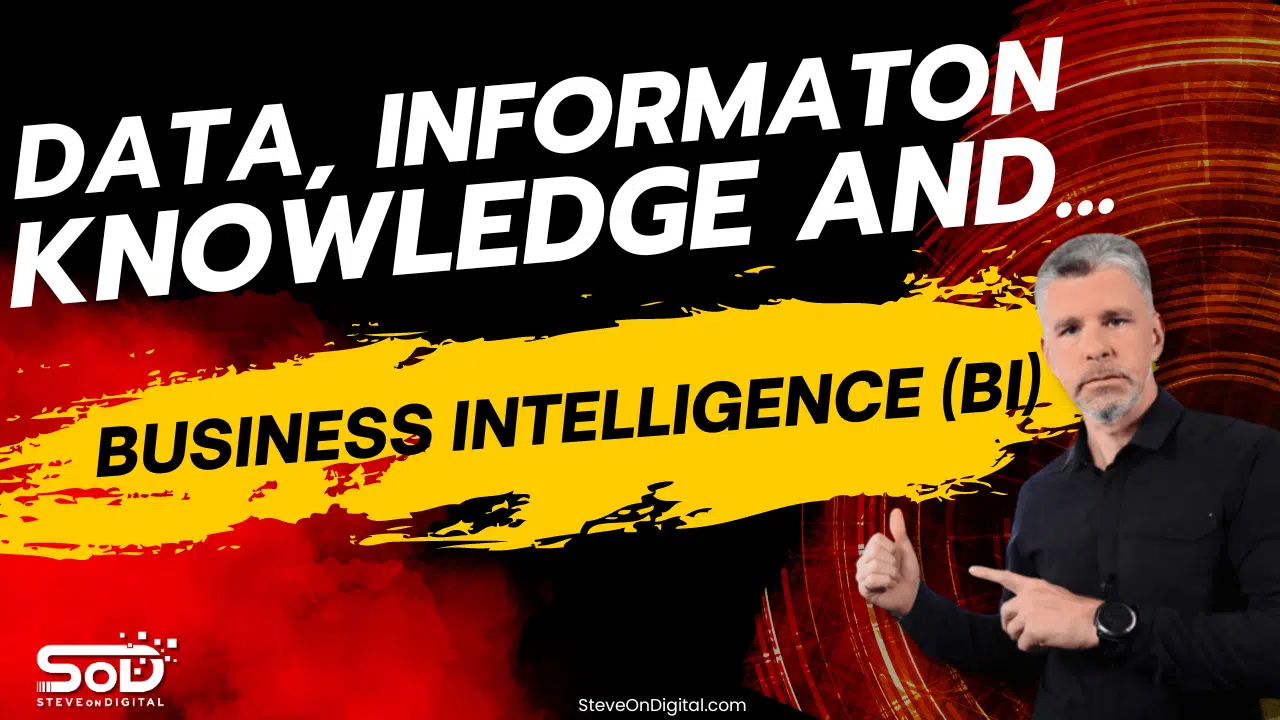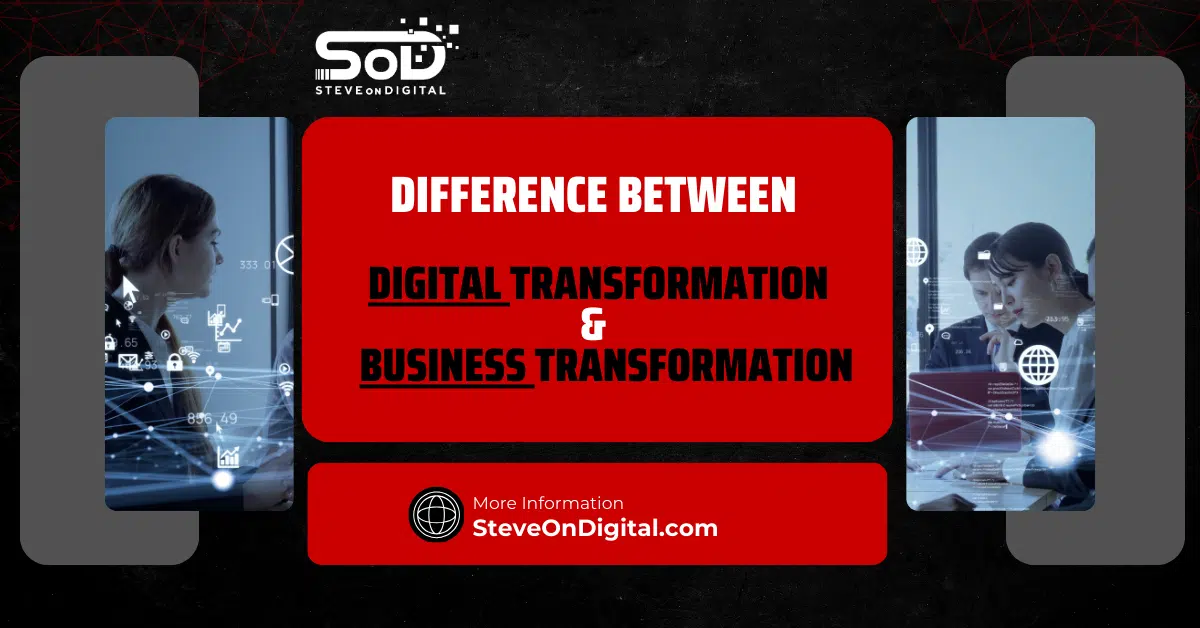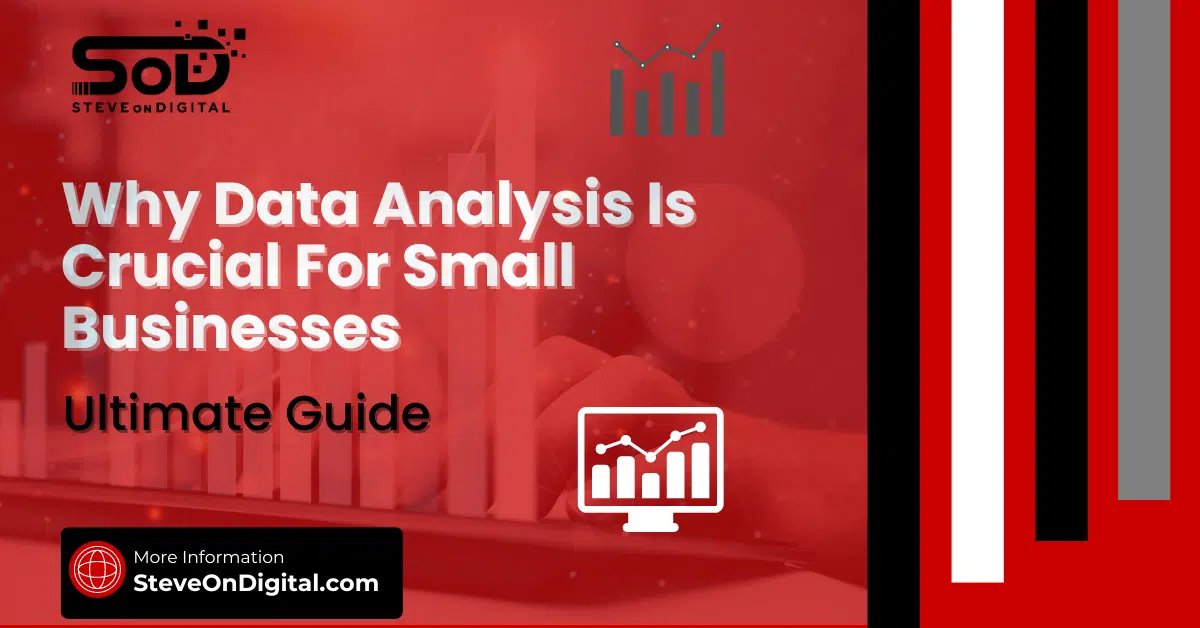The Data-Information-Knowledge Cycle (DIKW) helps transform raw data into valuable insights. It starts with data, turns it into information, gains knowledge from it, and finally, applies wisdom for better decisions.
As the Digital Transformation Specialist, I assist small and medium-sized businesses (SMEs) with practical advice and insights drawn from real-life scenarios. My background includes electrical engineering, an MBA, and a master’s in Project Management. I aim to help 1,000,000 business owners and IT directors navigate the digital landscape.
Overview Of The DIKW Cycle
The DIKW cycle is a hierarchical model that describes how raw data evolves into valuable wisdom. It’s a step-by-step process that starts with data and moves through information and knowledge before finally arriving at wisdom. This cycle is crucial for business decision-making because it helps us understand the context and meaning behind the raw data we collect.
Significance In Business Intelligence
The DIKW cycle is the backbone of business intelligence. By following this cycle, we can turn raw data into actionable insights. This not only reduces risks but also helps in making more informed decisions. For example, understanding customer loyalty trends from data can guide us in creating more effective marketing strategies.
Understanding The DIKW Cycle
Data: The Foundation
Data is the starting point of the DIKW cycle. It consists of raw facts and figures without context. In a business context, data can include anything from sales numbers to website traffic statistics. For example, the number of visitors to a website or the number of products sold in a day are pieces of raw data.
Types Of Data
Data can be broadly categorized into structured and unstructured data. Structured data is organized and easily searchable, like databases and spreadsheets. Unstructured data, on the other hand, includes things like social media posts and emails, which don’t have a pre-defined format.
| Type of Data | Description | Examples |
| Structured Data | Organized data with a fixed format | Databases, Spreadsheets |
| Unstructured Data | Unorganized data without a predefined format | Social Media Posts, Emails |
Transforming Data Into Information
Data becomes information when it is processed and organized in a way that makes it meaningful. This involves categorizing, labeling, and interpreting data to reveal patterns and trends. For instance, organizing sales data by region can show which areas have the highest sales.
Information Overload
One of the challenges we face is information overload. With so much data available, it can be difficult to distinguish what’s important. To manage this, we need strategies like data filtering and prioritization to focus on the most relevant information.
From Information To Knowledge
Knowledge is gained by analyzing and understanding the information we have. This step involves looking at information in context and applying experience and expertise to interpret it. For example, knowing that sales are highest in a specific region during certain months can help plan inventory and marketing efforts.
Explicit Vs. Tacit Knowledge
Explicit knowledge is easily communicated and shared, like documented processes and procedures. Tacit knowledge, on the other hand, is more intuitive and harder to transfer, such as personal insights and experiences. Both types are valuable in business decision-making.
Wisdom: The Pinnacle
Wisdom is the final stage of the DIKW cycle. It involves making informed decisions based on the knowledge gained. Wisdom combines understanding with foresight, allowing us to predict outcomes and make strategic decisions.
Business Intelligence And Wisdom
Business intelligence is essentially applied wisdom. It’s about using the insights gained from the DIKW cycle to make proactive decisions. For example, using knowledge about customer preferences to tailor marketing campaigns can lead to increased sales and customer loyalty.
The DIKW Hierarchy In Practice
Real-World Applications
When I first started applying the Data-Information-Knowledge-Wisdom (DIKW) cycle in my business, the transformation was remarkable. The DIKW cycle isn’t just a theoretical concept; it’s a practical tool that can revolutionize the way we operate. Let me share some examples from my own experience and other business scenarios.
One real-world application of the DIKW cycle is in managing customer feedback. Initially, customer comments and reviews were just raw data. By categorizing these comments into positive and negative feedback, I turned data into information. Analyzing this information revealed patterns, such as common complaints about a specific product feature. This knowledge allowed me to make informed decisions to improve that feature, ultimately leading to increased customer satisfaction.
Case Study: Marketing Strategy
Implementing the DIKW cycle in marketing was a game-changer for me. Here’s a detailed example of how it can be used to create a targeted marketing campaign.
- Data Collection: I gathered raw data from various sources, including social media metrics, website analytics, and sales records. This data included likes, shares, comments, conversion rates, and sales figures.
- Transforming Data into Information: I organized this data to identify trends and patterns. For instance, I found that engagement was highest among users aged 25-34, particularly on Instagram.
- From Information to Knowledge: By analyzing this information, I gained knowledge about my audience’s preferences. I noticed that posts featuring user-generated content had higher engagement rates. This insight was crucial for my marketing strategy.
- Applying Wisdom: Using this knowledge, I designed a marketing campaign focused on user-generated content, targeting the 25-34 age group on Instagram. This campaign not only increased engagement but also boosted sales significantly.
Role In Customer Loyalty And Employee Satisfaction
The DIKW cycle is also instrumental in enhancing customer loyalty and employee satisfaction. Here’s how I’ve seen it work:
- Customer Loyalty: By continuously collecting and analyzing customer data, I can identify loyalty drivers such as reward programs or personalized offers. This helps in creating strategies that foster long-term customer relationships.
- Employee Satisfaction: Employee feedback is another area where the DIKW cycle shines. By gathering raw data from surveys and performance reviews, transforming it into information about common concerns or satisfaction levels, and analyzing it to gain knowledge, I can make informed decisions that improve workplace conditions and boost morale.
Benefits Of Implementing The DIKW Cycle
Enhanced Decision-Making
One of the most significant benefits of the DIKW cycle is its impact on decision-making. By following the DIKW process, I ensure that my decisions are based on solid data and informed analysis. This leads to more accurate and effective business strategies. For example, using historical sales data to forecast future demand helps in making better inventory decisions.
Risk Management
Implementing the DIKW cycle also plays a crucial role in risk management. By analyzing data and information, I can identify potential risks and develop strategies to mitigate them. For instance, monitoring market trends and competitor actions allows me to anticipate changes and adapt my strategies accordingly, reducing the risk of business losses.
Improved Business Intelligence
The DIKW cycle enhances business intelligence by providing deeper insights into various aspects of the business. By turning raw data into actionable wisdom, I can make more informed decisions that drive business growth. For example, understanding customer behavior patterns helps in tailoring marketing efforts to meet their needs more effectively.
| Benefit | Description |
| Enhanced Decision-Making | Provides a structured approach to make informed decisions based on solid data |
| Risk Management | Identifies potential risks and develops strategies to mitigate them |
| Improved Business Intelligence | Offers deeper insights into various business aspects, aiding in strategic planning |
Tools And Technologies For DIKW
Data Collection Tools
Effective data collection is the foundation of the DIKW cycle. Various tools and methods can help in collecting accurate and relevant data. I use tools like Google Analytics for website data, social media insights for engagement metrics, and CRM systems for customer data. These tools provide a comprehensive view of all this data.
Information Management Systems
Once data is collected, organizing and managing it efficiently is crucial. Information management systems like databases and content management systems (CMS) help in structuring and storing information. These systems make it easier to retrieve and analyze data, turning it into valuable information. For example, using a CMS to organize customer feedback can reveal insights into customer satisfaction trends.
Knowledge Management Platforms
Knowledge management platforms are essential for sharing and retaining knowledge within an organization. Platforms like SharePoint or Confluence facilitate collaboration and knowledge sharing among team members. This helps in retaining explicit knowledge and making it accessible to everyone in the organization.
| Platform | Description | Use Case |
| SharePoint | A collaborative platform for sharing documents and information | Centralized knowledge repository |
| Confluence | A team workspace for collaboration and documentation | Project collaboration and documentation |
Business Intelligence Software
Business intelligence software aids in decision-making by providing tools for data analysis and visualization. Tools like Tableau, Power BI, and Qlik Sense help in turning data into actionable insights. These tools allow me to create dashboards and reports that provide a clear view of business performance, aiding in strategic planning.
Challenges In The DIKW Cycle
Data Quality Issues
One of the biggest challenges I’ve faced in implementing the Data-Information-Knowledge-Wisdom (DIKW) cycle is data quality. Poor data quality can derail the entire process, leading to faulty insights and bad decisions. Common data quality problems include:
- Inaccurate Data: Errors in data entry can result in inaccuracies.
- Incomplete Data: Missing values can skew analysis.
- Inconsistent Data: Variations in data formats or standards can cause confusion.
To tackle these issues, I recommend regular data audits and using data validation tools to catch errors early. Implementing strict data governance policies also helps maintain data quality.
| Data Quality Issue | Description | Solution |
| Inaccurate Data | Errors in data entry | Regular data validation checks |
| Incomplete Data | Missing values in datasets | Implement mandatory fields |
| Inconsistent Data | Variations in data formats or standards | Standardize data entry protocols |
Information Silos
Information silos are another hurdle. These occur when data and information are isolated within departments or teams, preventing a holistic view of the organization. In my experience, breaking down these silos involves:
- Cross-Departmental Collaboration: Encouraging communication between departments.
- Unified Systems: Using integrated software solutions that allow data sharing across the organization.
- Regular Meetings: Scheduling regular interdepartmental meetings to discuss insights and share information.
Knowledge Sharing Barriers
Sharing knowledge within an organization can be challenging. Employees may hoard knowledge due to competitive pressures or lack of trust. Overcoming these barriers requires:
- Creating a Knowledge-Sharing Culture: Encouraging open communication and collaboration.
- Using Knowledge Management Platforms: Implementing tools like SharePoint or Confluence to facilitate knowledge sharing.
- Recognizing and Rewarding Sharing: Recognizing and rewarding employees who actively share their knowledge can motivate others to do the same.
Best Practices For Using The DIKW Cycle
Data Governance
Effective data governance is crucial for ensuring data quality and consistency. In my experience, the following principles are key:
- Data Ownership: Assigning clear ownership and responsibility for data.
- Data Policies: Establishing policies for data entry, storage, and maintenance.
- Regular Audits: Conducting regular data quality audits to catch and fix issues early.
Effective Information Categorization
Accurate categorization of information is vital for transforming data into knowledge. Some techniques I use include:
- Standardized Labeling: Using standardized labels and categories for information.
- Metadata: Adding metadata to provide context and improve searchability.
- Automation: Leveraging automation tools to categorize information consistently.
Knowledge Management Strategies
Creating a culture of knowledge sharing is essential for effective knowledge management. Best practices include:
- Centralized Repositories: Maintaining centralized repositories for storing and accessing knowledge.
- Training Programs: Offering training programs to educate employees about the importance of knowledge sharing.
- Feedback Mechanisms: Implementing feedback mechanisms to continually improve knowledge management practices.
Utilizing Business Intelligence Effectively
Making the most of business intelligence tools can drive better decisions. Here are some tips:
- Custom Dashboards: Creating custom dashboards tailored to specific business needs.
- Data Visualization: Using data visualization tools to make insights more accessible.
- Regular Reviews: Conducting regular reviews of BI tools and strategies to ensure they remain effective.
The Future Of DIKW
Trends In Data And Information Management
The field of data and information management is constantly evolving. Some emerging trends include:
- Big Data Analytics: Leveraging big data technologies to handle and analyze large volumes of data.
- AI and Machine Learning: Using AI and machine learning to automate data processing and gain deeper insights.
- Cloud Computing: Adopting cloud-based solutions for scalable and flexible data management.
| Trend | Description |
| Big Data Analytics | Technologies to handle and analyze large volumes of data |
| AI and Machine Learning | Automating data processing and gaining deeper insights |
| Cloud Computing | Scalable and flexible data management solutions |
Advancements In Knowledge Management
Innovations in knowledge management are making it easier to capture, share, and utilize knowledge. Key advancements include:
- AI-Powered Knowledge Systems: Using AI to automate knowledge capture and retrieval.
- Collaborative Platforms: Enhanced collaborative platforms that integrate seamlessly with daily workflows.
- Gamification: Implementing gamification strategies to incentivize knowledge sharing.
The Evolving Role Of Business Intelligence
Business intelligence continues to evolve, offering new opportunities for data-driven decision-making. Future directions include:
- Predictive Analytics: Moving beyond descriptive analytics to predictive and prescriptive analytics.
- Real-Time BI: Implementing real-time BI solutions for immediate insights and faster decision-making.
- Enhanced User Experience: Focusing on improving the user experience of BI tools to make them more accessible and user-friendly.
Final Thoughts
Summary Of The DIKW Cycle
The DIKW cycle provides a structured approach to transforming raw data into valuable wisdom. By following this cycle, businesses can enhance decision-making, improve risk management, and gain deeper insights.
Importance Of Continuous Improvement
Continuous improvement is essential for maintaining the effectiveness of the DIKW processes. Regularly evaluating and refining these processes ensures they remain relevant and efficient.
Encouragement For Businesses
I encourage all businesses to adopt the DIKW cycle. By doing so, you can make more informed decisions, drive growth, and stay ahead in an increasingly data-driven world. Embrace the cycle and see the transformative impact it can have on your business.




